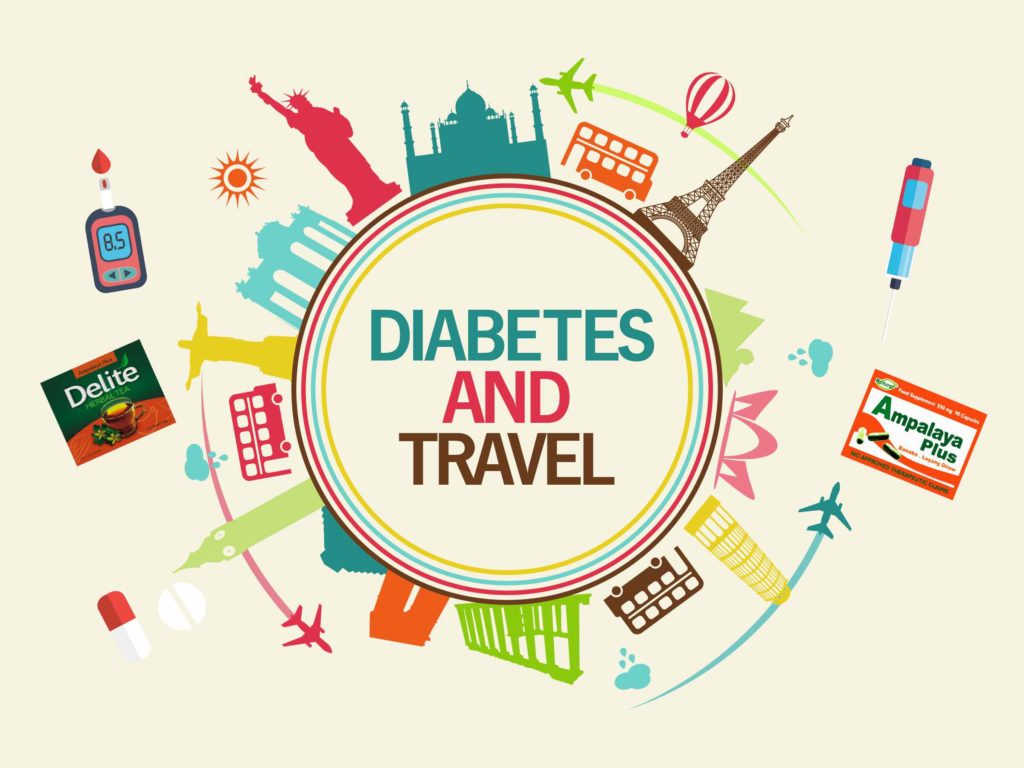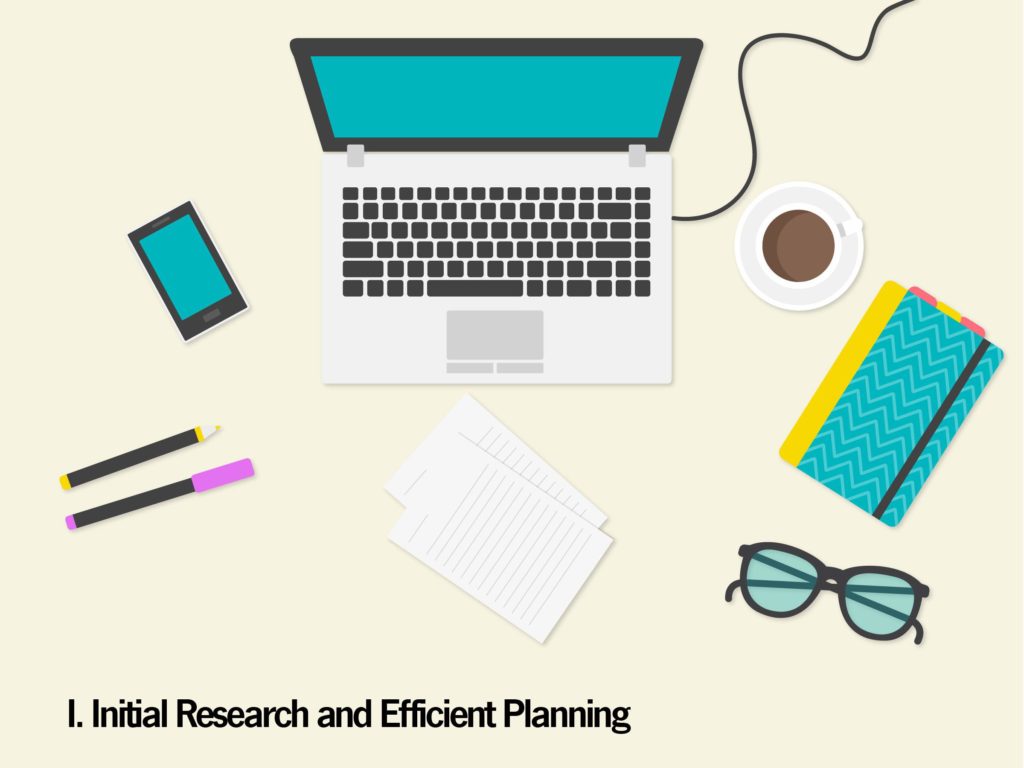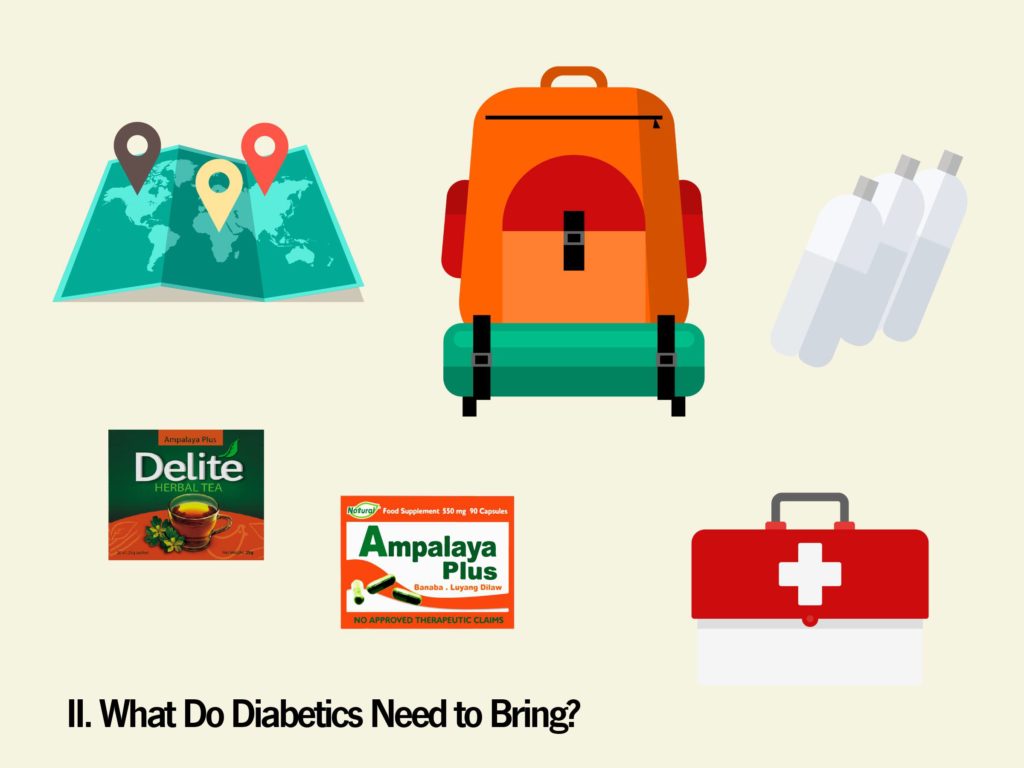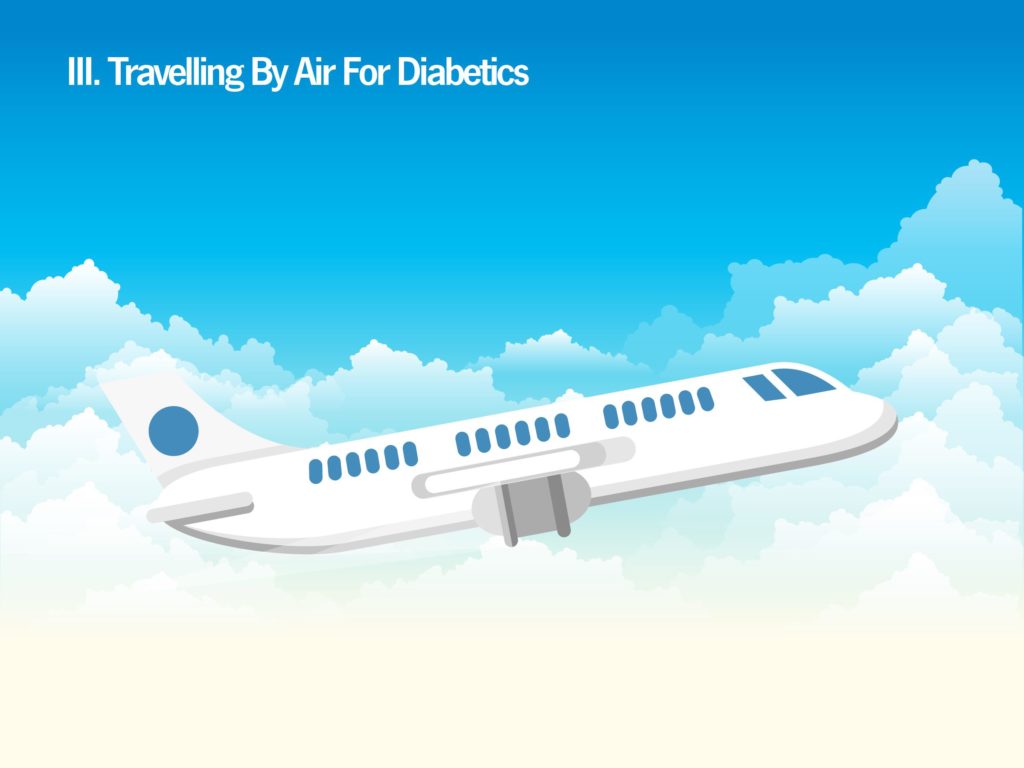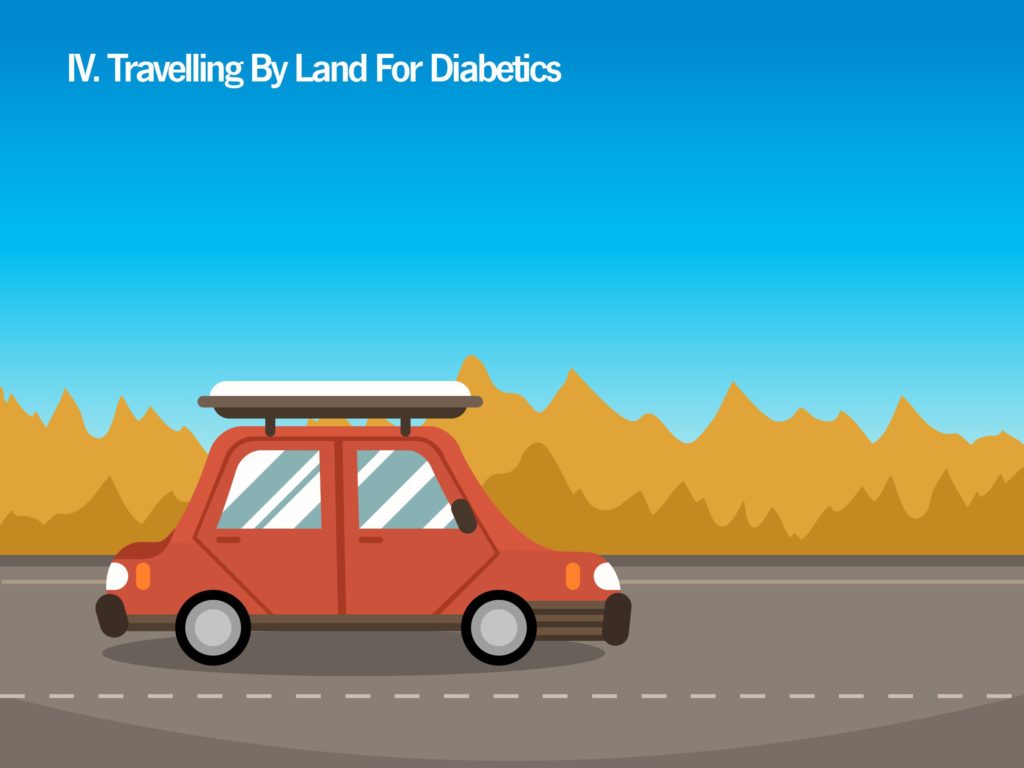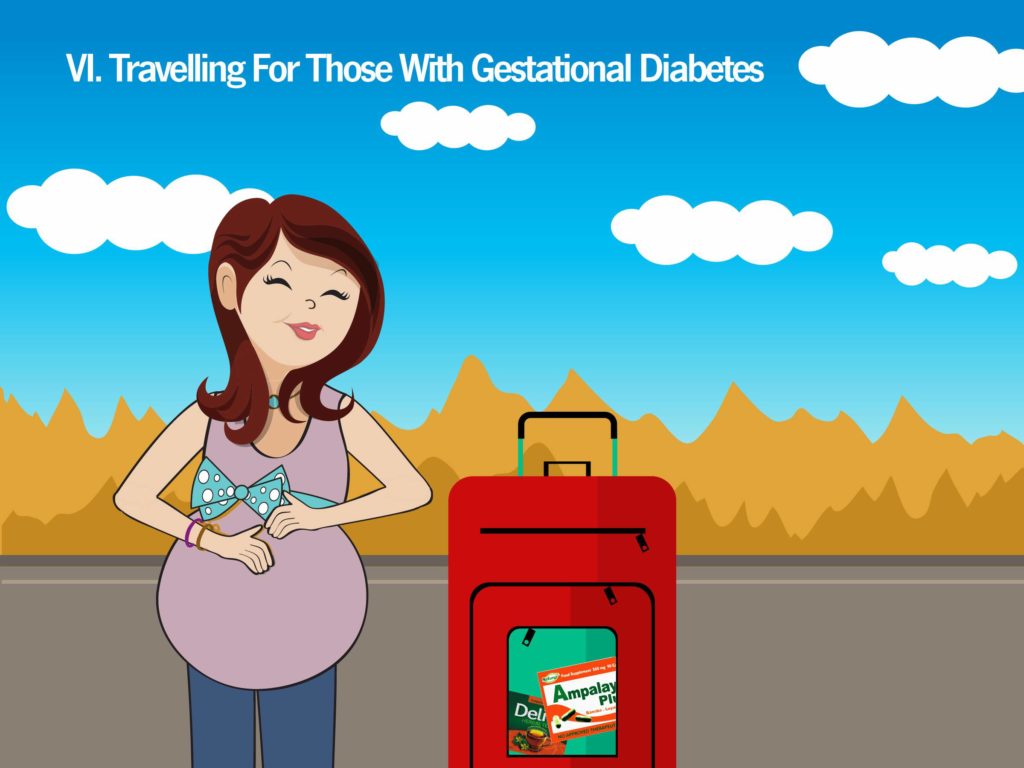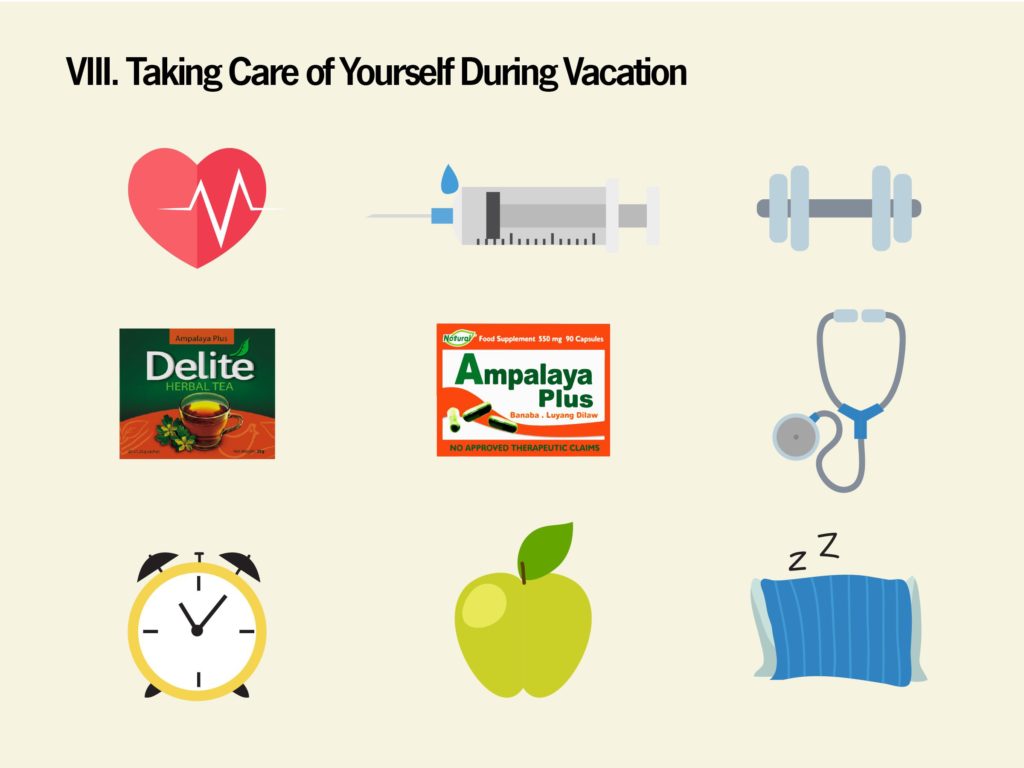Having diabetes—whether Type 1 or Type 2—should not impede your goals of seeing the world, or taking some time off with family, or taking a well-deserved break from work.
You do, however, have some special considerations that you need to keep in mind. The good news is that with careful planning, your travel experience will be one for the books.
Initial Research and Efficient Planning
Preparing for your trip depends on where you are going, how long you are going to stay there, and the activities that you intend to do.
To make sure you have all bases covered, there are a couple of things you need to accomplish months prior to leaving:
1. See your doctor or medical team
This is especially true for diabetics who will go on long trips. Notify your doctor about your travel itinerary, preferably 4 to 6 weeks before your trip. This will give you enough wiggle room in case your doctor orders some tests to be done.
You should also ask for the following:
- A letter detailing your diabetes condition, medications, and corresponding dosage. If you are going abroad or going to cross borders, have this list on your person at all times. It will stand as proof that you have a medical need for the items in your hand-carry (e.g. needles, syringes, insulin) that security might otherwise confiscate.
- Prescriptions for your current medications, insulin refill, and blood test equipment. In the event you run out or damage your equipment abroad, you can go to the local pharmacy for replacement.
2. Do your research
When your test results checked out and your doctor gave you permission to travel, you need to do ample research on the places you are travelling to:
- Weather – What will be the temperature in the area you will be staying in? How about the weather forecast? Take these into consideration when you pack clothes and other necessities.
- Food – Being a diabetic means you need to watch the sugar content of everything you eat. You may want to try some local delicacies, so look them up and see if you can eat them and in what portions.
- Insulin and medication supplier – Find out where the local pharmacies are or if your medications are actually available in the area. If not, make the necessary arrangements to cover for this (e.g. bring more medications).
- Vaccines – There may be some virus spreading in the country you are going to. Make sure you are updated with your vaccines or your booster shots. If you are pregnant with diabetes, be extra careful when going to areas with viruses that might affect your baby (e.g. Zika).
- Laws – Some countries may have laws specific to purchasing diabetes medications. Read up on these and prepare. You wouldn’t want to run out of medication in a foreign country with no way of acquiring one.
- Airline security regulations – Since you are going to travel with medications and blood test equipment, check with the airline prior to booking your flights if they allow those on-board. Also, know their regulations regarding insulin shots in-flight.
- Emergencies – In case of emergencies, you need to know where to go. The International Association of Medical Assistance for Travelers can give you a list of English-speaking doctors in the countries you’ll go to. Also, find out where the consulate is for your country of origin so they can provide assistance if needed.
To minimize leaving out important things, all paperwork—flight and lodging bookings, travel and health insurance, doctor’s notes and prescriptions—should be ready one month before leaving.
What Do Diabetics Need to Bring?
After doing your research, you are ready to pack the following:
- Insurances. Arrange your health and travel insurances, preferably three months before you leave. Make sure these are up to date. In the event that these will expire sometime during your travel, call your company and inquire what you can do given that you’ll be out of the country then.
- Medical ID. This may come in the form of a bracelet or a necklace that details your diabetes and any allergies you may have. Your medical ID will be vital in case you encounter any emergency.
- Medications. The rule of thumb when travelling with diabetes is to bring twice as much as you need. Split your medications between your bags, but never put it in your check-in bag. Check-in bags may be subjected to manhandling or harsh temperatures. Pack medications in clear bags for easier inspection. Make sure that you have:
- Enough insulin, syringes, or diabetes pills
- Blood glucose test equipment
- Extra batteries, if needed
- Other medications like anti-nausea, anti-diarrhea, antibiotics, ointments, etc.
- Natural supplements like Ampalaya Plus to help you regulate your blood sugar while travelling
- Snacks to eat while in transit. Delays can affect the length of your travel. You wouldn’t want to be stuck in the airport or in traffic without anything to help your blood sugar go up. Put some of these snacks in an air-tight pack:
- Crackers, cereal bars, or other extra starchy carbohydrates food
- Cheese
- Fruits
- Juice box
- Candies or glucose tablets, in case of low-blood sugar
- Delite Herbal Tea, a great alternative to high-calorie drinks
It’s important to note that your insulin should be packed right, especially if you are going to places with extreme temperatures.
In hot weathers, keep your insulin cooled. Stay in a room with a fridge and/or carry a cooler box with you. There are also Frio bags (or alternative brands) available that are made specifically to keep insulin cool for travelers.
In cold weathers, make sure the insulin does not freeze. Keep it inside your bag or near your body. If you start seeing crystals inside the vial, dispose of it. Check your sugar levels frequently to make sure your insulin is still effective.
Travelling By Air For Diabetics
When traveling by air, special considerations need to be taken into account.
For one, you are going to carry vials and needles with you—two things that airlines do not allow on-board. Secondly, you will only have your carry-on bags, so you have to be certain that you have everything you need for a long-haul flight.
Considerations Before Flying
If you’ve done thorough research prior to flying, then you will have an idea of the airline regulations with regards to bringing diabetes medications on-board.
In case you haven’t yet, call up your airline (both in your area and your destinations) and ask the following:
- Meal considerations – You can request special meals that would fit your diet (e.g. low in sugar or cholesterol). However, do not request this the day before your flight. Do it at least two (2) days prior to flying. Also, ask the frequency of serving food so you can schedule taking medications or your insulin shots.
- Rules regarding diabetes medications – Will your equipment pass through x-ray machines or full-body scanners? What are their rules regarding liquid items? Can you take syringes on the plane? What documents do you need to verify that you need your equipment on-board?
Security Regulations
Different countries have their own security regulations. You might want to look into those so you’ll know what you can or cannot do. To give you an idea, here are some countries’ security regulations:
- Australia
Australian airline security regulations include: carrying all diabetes supplies and medications in your carry-on bag with your name on the script label; several copies of your doctor’s official letter (especially if you have a pump); and presenting insulin supplies at security point.
Australians are required to carry their National Diabetes Services Scheme (NDSS) card. Click here for more information on Australian law regarding diabetes supplies.
- United Kingdom
Here is what UK’s Civil Aviation Authority said: “It is essential that diabetic passengers carry adequate equipment (glucose meters, lancets, batteries) and medication in their hand baggage. It is also important that insulin not being used in the flight is not packed in the hold baggage as this may be exposed to temperatures, which could degrade the insulin. In addition, there is also the potential that luggage may be lost en route.”
Note: For those who are living in member countries of the European Union, you can apply for or renew your European Health Insurance Card (EHIC). This will allow you to receive medical assistance when traveling to other EU countries.
- United States of America
Review the Transportation Security Administration’s (TSA) guidelines on diabetes supplies you can bring with you.
Among the things you can bring are unlimited number of syringes, insulin dispensing products, insulin pumps, liquids or gels, blood sugar and urine testing equipment. Declare these at airline checkpoints. Always bring your doctor’s letter and prescriptions.
You can click here for a more detailed list of TSA’s screening procedures for all disabilities and medications.
- Asian Countries
There are around 50 beautiful countries in Asia. Each country has their own regulation regarding diabetes medications. Take some time researching or call the airline and directly ask.
Click on each country below for links to their aviation rules on diabetes equipment:
Pre-planning is vital when travelling. Research and/or call the airline to verify the information you need. Do not forget to bring letters and prescriptions from your doctor, label your medications and supplies properly, and declare them at security checkpoints.
And since your medications and supplies might prolong going through security, arrive two to three hours before your flight.
Preparing for Long-Haul Flights
Long-haul flights can be extra tricky, since you need to take insulin shots at specific times during the day. Once again, planning ahead will pay off:
- Meals eaten on board – If you’ve done your homework, you’ll know the meals they serve on the flight. If it does not suit your diet, you can request for a specific meal that will not affect your glucose level. For snacks, you can ask the cabin crew if they have fruit or crackers on board. You can always pack your own food, as long as they abide by airline rules. Keep hydrated.
- Bring snacks in your carry-on bag – This is needed, especially for those who are prone to hypoglycemia. Bring some crackers, fruits, cheese, or candies that you can munch on during the flight.
- Injecting insulin while on the plane – Be careful not to inject air into the insulin bottle, since the cabin is pressurized. The plunger might give you difficulties in accurately measuring the insulin.
- Adjusting time – When you are crossing time zones, set your watch to your home time, so you’ll know when you need to get your shots.
- Moving around – Walk around when the pilot allows it. This will reduce your risk of blood clots.
- Checking sugar level – Monitoring is vital. Do this every four hours.
- Bring Ampalaya Plus – Ampalaya Plus, a natural food supplement, can help regulate your blood sugar level. Take one capsule 10 minutes before you eat. Made of bitter gourd, turmeric, and banaba, Ampalaya Plus is FDA-approved, so you are safe to bring this during your travels.
To make sure you get assistance on-board, as well as for your own peace of mind, inform flight attendants of your condition. The important thing is to listen to your body. Immediately inform them in case you start feeling dizzy, lightheaded, or short of breath.
Travelling By Land For Diabetics
Land travel is not as complicated as travelling by air. However, there are still a few things you need to do:
By Car or Train
- Have a small cooler where you can pack your food, drinks, and medications.
- Your insulin should not be placed under direct sunlight or wherever it is the hottest inside the car.
- Take regular breaks. This will: 1) help you move around and 2) give you time to check your glucose levels (ideally, every four hours).
- Do not attempt to continue driving if you do not feel well or if you are experiencing signs of hypoglycemia.
- Since diabetes can also affect your eyesight, make sure you have your eyes checked prior to your travel. Get new eyeglasses, if needed.
- On trains, you can inform the dining car staff that you have diabetes so they will know the right food to serve you. Research beforehand. AMTRAK, for instance, has a page dedicated for their meals and how you can order your special dietary needs.
By Foot
For those who want to hike or are looking into backpacking, keep in mind the following:
- Always stay hydrated. You wouldn’t want to overheat.
- Carry your medications and blood testing kits. Test your sugar level regularly. Your insulin should be packed properly to keep them in the right temperature.
- Bring more than enough to cover the hiking time. It’s better to overpack than run out when you’re somewhere far from your source of insulin.
- Bring snacks and drinks that would help when you feel signs of hypoglycemia. You can opt for pre-packaged nutrient bars.
- Take breaks as needed. Overexerting will not do you any good, even if it would take more time to reach your destination.
- Use footwear that will amply protect your feet from cuts.
Travelling By Sea For Diabetics
Cruise ships bring with them a lot of fun activities and facilities that will keep you entertained for the duration of your stay. However, there are a few specific things about cruise ships that diabetics need to be aware of:
- Food temptation
There is an abundance of food and drinks on cruise ships. They are filled with restaurants and cafes, even by the pool side. As such, the temptation to not follow your diet becomes extremely high.
To remedy this, you can let the maître know that you have diabetes. They will then let you know which food you can eat and which food you need to avoid.
To take a more proactive stance, you can tell your travel agent of your condition. Some companies can even group you with other diabetics, so your table will be served with low-carb meals for main course or fruits as desserts.
- No pharmacies.
Make sure that you pack more than enough medications that would last you until the end of the trip. Ships do not have pharmacies on board.
They do have a medical team, but they are not equipped like full-fledged hospitals are. For serious emergencies, they can only go as far as stabilizing a patient’s condition, and then transporting them to the nearest medical facility.
Travelling For Those With Gestational Diabetes
Women who are diagnosed of gestational diabetes need to have permission from their doctors before traveling. A lot of doctors will not allow it, as there are plenty of risks for both the mother and the unborn child.
The Risks
Immunization shots (e.g. measles, yellow fever, etc.) are usually not allowed for pregnant women, as these might affect the fetus. You might want to avoid going to a country that would require you these vaccinations.
Secondly, women with gestational diabetes are also not allowed to travel, if they pose the following risk factors: 1) over 35 years and pregnant with the first baby; 2) high-blood pressure; 3) cervical complications; 4) vaginal bleeding; 5) carrying twins or more; 6) histories of miscarriage, ectopic pregnancy, or premature labor; or 7) abnormal placenta.
If you are a pregnant woman and diagnosed of gestational diabetes, know your risks and discuss with your doctor. If you they advise you not to travel, it is best to follow them.
Travelling despite your medical team’s advice will give your travel and health insurance the right to deny coverage should you need it during the trip.
Safely Travel with Gestational Diabetes
If or when your doctor gives you the go signal to travel, take all the necessary precautions. Remember, it’s not just your health that is on the line; it’s also your baby’s.
- The best time to travel would be in your second trimester. You are least likely to experience complications during this stage.
- Although there are no laws against pregnant women flying in their third trimester, some airlines do have policies against those travelling near their due date. Check with the airline for their policies.
- During long-haul travels, make sure that you walk around (in cases of flying or trains) or take multiple breaks (in case of travelling by car). This is to prevent blood clots.
- Travel with at least one adult with you, so you will have a companion in case of an emergency.
- During your trip, watch the food that you eat. Familiarize yourself with how local delicacies are cooked. Make sure they are thoroughly cooked. You would want to stay away from food with pre-cut fruits or raw greens. For water, always go for the bottled ones.
- Always keep yourself hydrated, especially if you travel to a hotter climate.
Everything You Need To Do When You Get To Your Destination
As with your pre-travel preparations, you should also put the same amount of thought into all the things you need to do once you get to your destination. This will ensure that you spend less time worrying and more time on actually enjoying the trip.
Cold Climate
In cold climates, diabetics tend to have higher blood sugar levels. This is because your body pumps more sugar to help keep you warm and your blood circulating. Hyperglycemia may be a possible threat, especially if you go to below-freezing climates.
In terms of clothing, make sure your feet are always kept warm. Thick socks and insulated shoes are the way to go. You are prone to developing infection on your feet, so protect them. Stay bundled in warm clothes to keep your blood sugar levels from spiking.
The cold weather also increases your risk of catching viruses (e.g. cold, flu), so stay up to date with your vaccines. Take some vitamins with you to boost your immune system.
Lastly, your diabetes equipment may be less efficient in cold weather. For an accurate reading, test before and after you eat and see the trend of your readings. Do not expose your supplies in below-zero temperature.
Hot Climate
Similar to the cold weather, you are also at risk of hyperglycemia when the weather gets too hot. Avoid doing physical activities when the temperature is at its hottest. Stay indoors or find shade to cool down.
Protect your skin by wearing sunscreen (especially on exposed areas), breathable clothes, wide-brimmed hat, and sunglasses. For footwear, choose sandals that fit you well to avoid burning from the hot sand/floors.
Sunbathing may affect your glucose level. During your trip, monitor it closely. Like with cold climates, take tests before and after meals, then see the trend. You will accurately read your sugar level this way.
Do not let your diabetes equipment be exposed directly under sunlight nor in areas hotter than room temperature.
Adjusting To Time Zone Change
When travelling to a different country, you may need to adjust your medication schedule given the difference in time.
During flights, as stated earlier, keep your watch synced to your home time. You will, however, need to adjust once you’ve landed to your destination.
Adjustments to your insulin is not needed if you are only going across less than five time zones. If you are, remember that travelling to the east means your days will be shorter, while travelling to the west means your days will be longer. Travelling north and south does not require any change.
If you travel to the east, you may need to reduce your insulin intake, since your doses would be taken closer to each other. You might risk hypoglycemia with this. On the opposite end, travelling westward may call for an increase in insulin intake, since the schedules would be farther apart.
The American Diabetes Association has given clear and detailed examples on how to do adjust properly. You can also click here for a diabetes calculator developed specifically for travel adjustments. However, it is always best to discuss this with your doctor for you to be sure.
Taking Care of Yourself During Vacation
When in a foreign country, it’s easy to get lost in the new experiences and excitement of it all. The good thing is that having fun and managing your diabetes can go together. Keep your health a priority by following these pointers:
- Check blood glucose levels often – the temperature and the amount of physical activity you do will affect your blood sugar. Test often so you will know the activities you can do and those you are better off avoiding. Taking Ampalaya Plus every day (one capsule 10 minutes before meals) can help you regulate your blood sugar.
- Keep supplies close to you – do not leave your hotel room without these in your bag. Make sure these can be accessed easily but still stored properly. On top of that, important papers and medical IDs should also be with you at all times.
- Clean your hands – if you go to areas without a lot of running water, pack alcohol or wet wipes with you. This will prevent you from getting false readings on your glucose meters, due to dirt or food residue on your fingers.
- Keep exercising – vacation does not mean you can let go of the routine you worked hard to establish. Make sure you still clock in ample hours to do exercise, especially if you are needing to lose weight.
- Watch what you eat and drink – the temptation of trying out local delicacies is high. Know beforehand what these food and drinks are made of. You can always ask whoever cooked it. Also, keep in mind that alcoholic drinks are full of calories, so you might want to pace yourself with those.
- Always carry snacks – in the event of delays or traffic, make sure that you have food in your bag that can help you out if or when your sugar levels get too low. Keep teabags of Delite Herbal tea in your carry-on, so you won’t need to order high-calorie drinks.
- Never go barefoot – Your feet are prone to infection, so protect them properly. Since wounds do not heal easily for diabetics, wear comfortable and fitted sandals when you go to the beach or go hiking.
- Know where to obtain medical assistance abroad – if you did your homework, you already have a list of local hospitals and pharmacies. It also wouldn’t hurt to ask the locals or the hotel manager for extra information.
- Tell companions about your condition – let your companion/s know of the signs of hypo or hyperglycemia, so they can help you out when needed.
- Learn the local language – it’s recommended that you learn to say a few words in the local tongue pertaining to your condition. Sentences like “I have diabetes” or “I need help” or “No sugar please” can help you communicate better.

